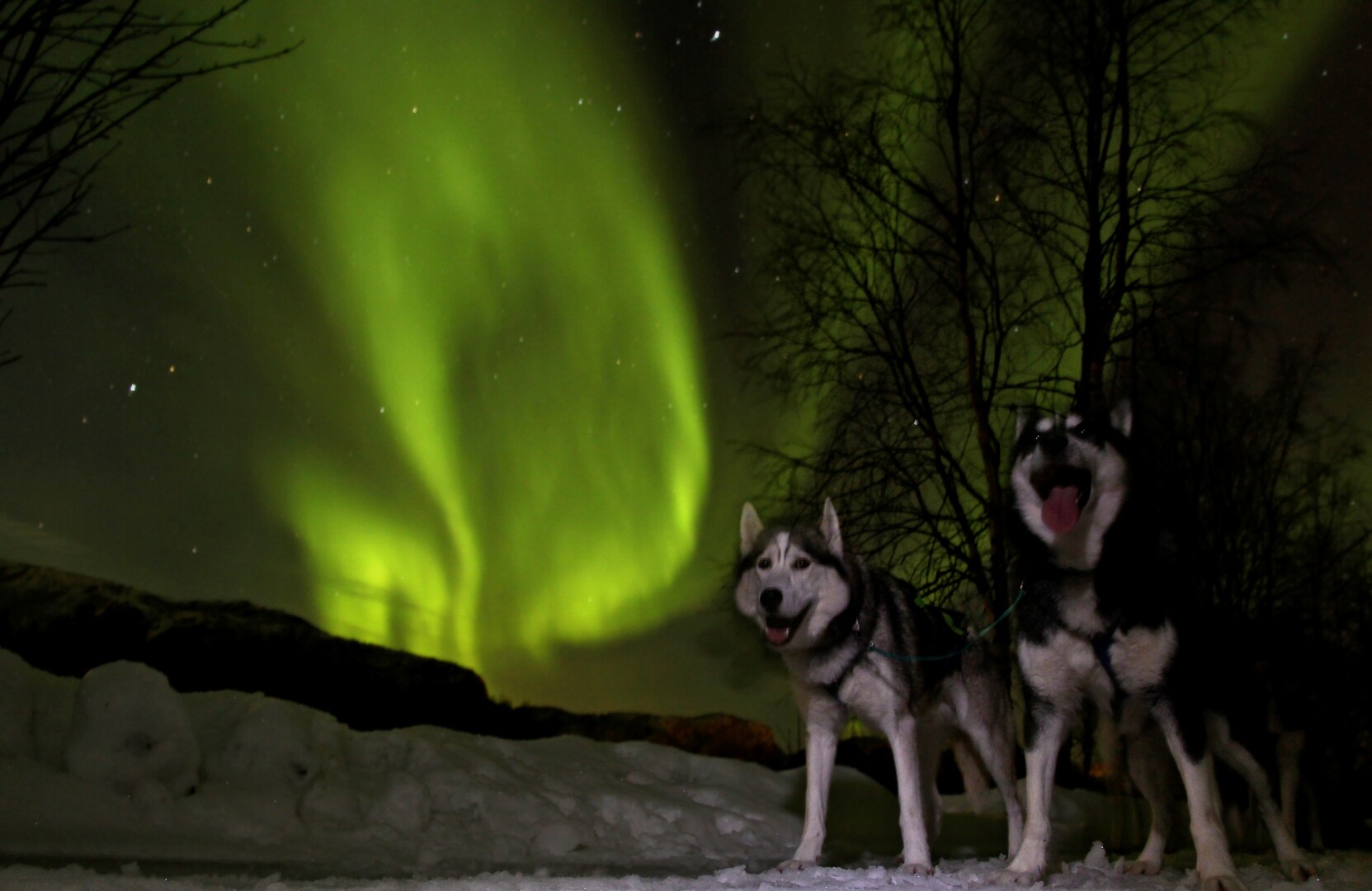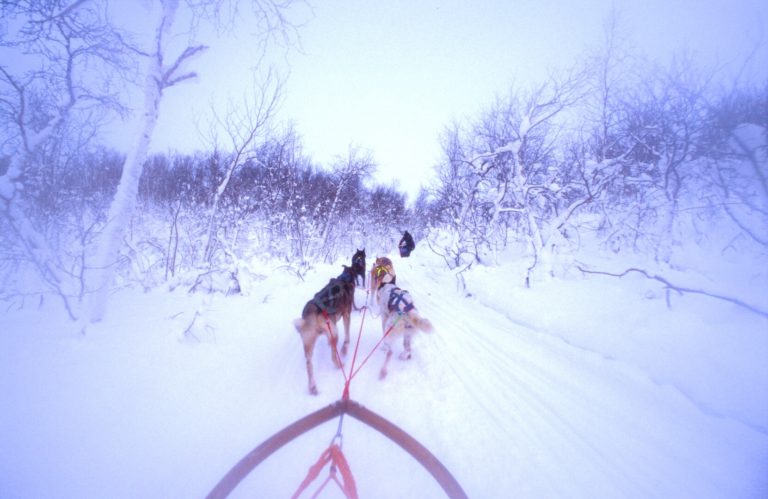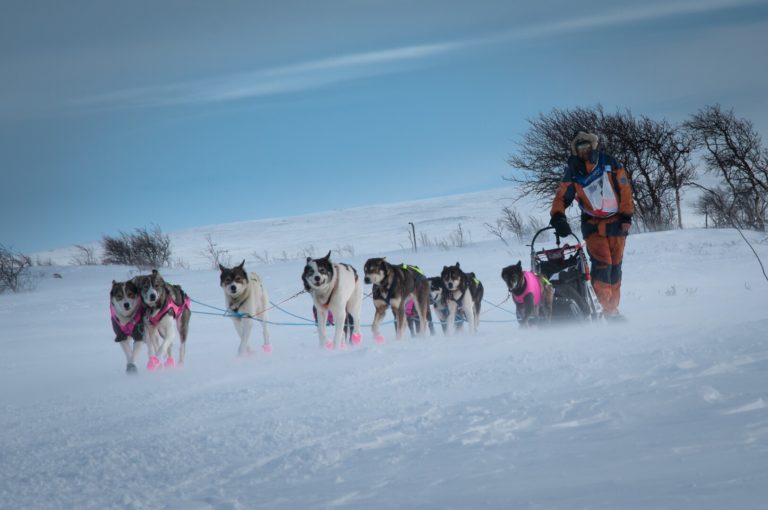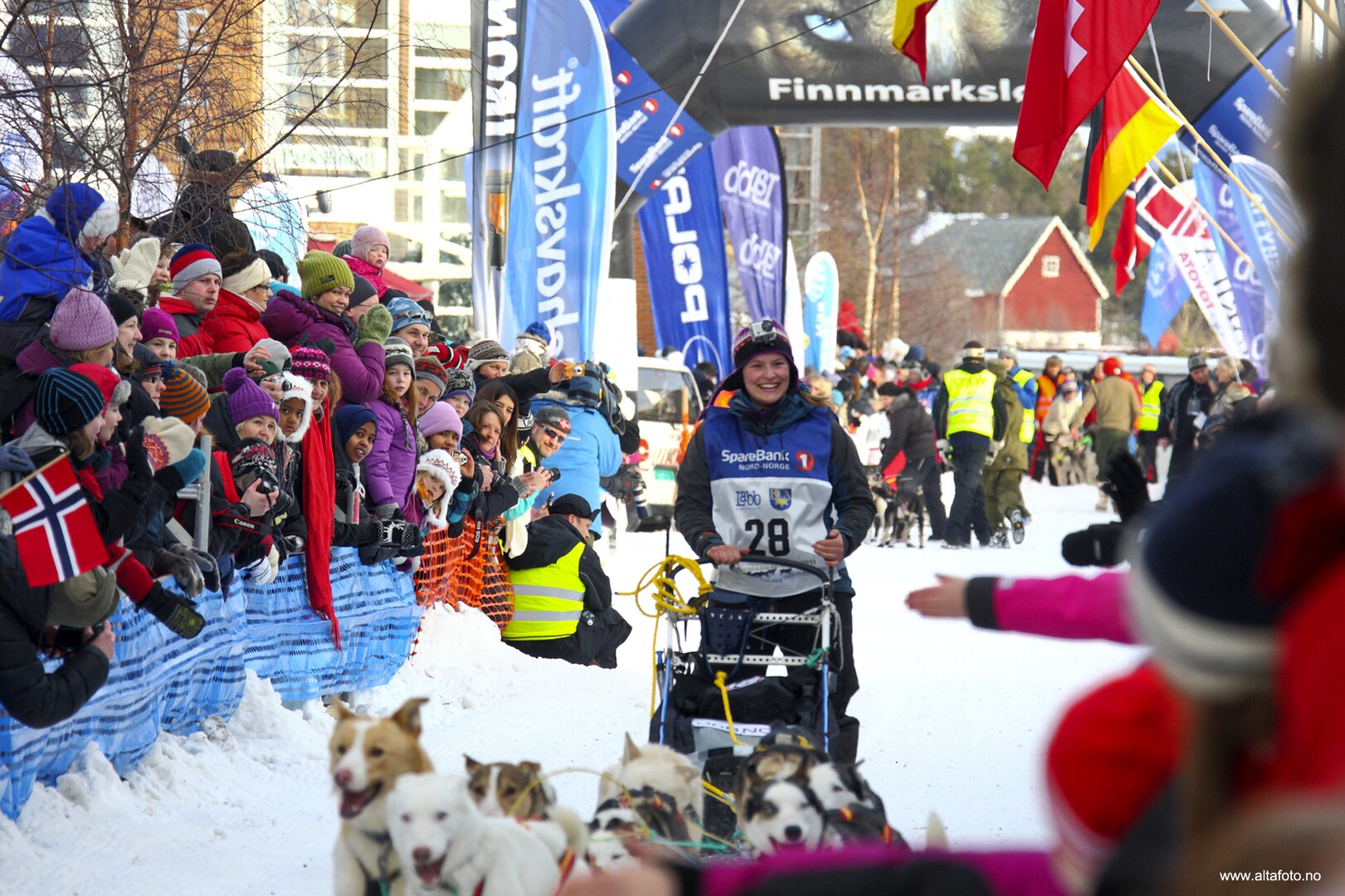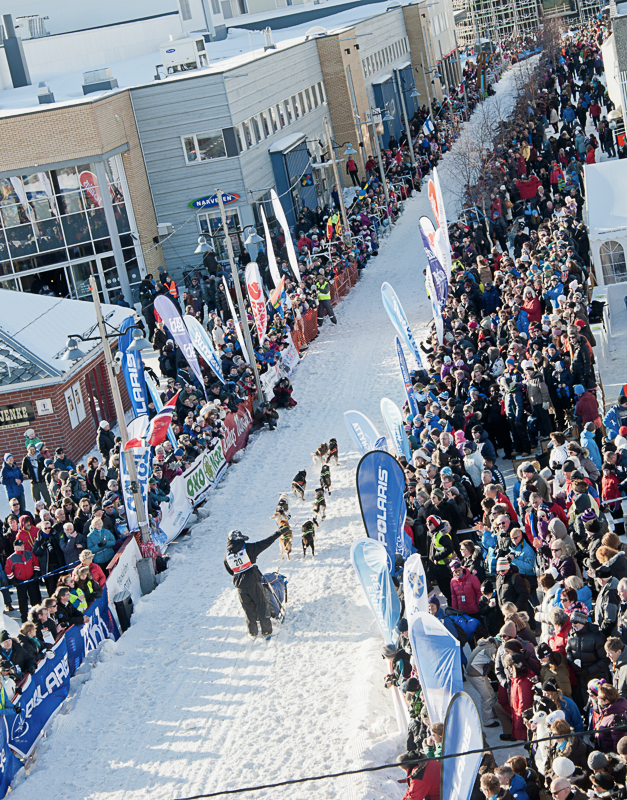The city known for being the starting point for Europe’s longest dog sled race has earned the title of Norway’s premier dog sledding city.
Today, Alta is most famous for being the starting point for Finnmarksløpet. The 1200 km dog sled race around Norway’s largest county has become well known to the public, as the Norwegian public broadcaster, NRK, has covered the race for many years now. Since the first race, dog sledding as a sport and leisure activity has been part of the identity of Finnmark’s largest city.
Dogs with roots in Norwegian Arctic history
Through Norwegian nation-building and storytelling, Norwegians are well aware of the effort and dedication of our four-legged friends in connection with our most famous Arctic and Antarctic expeditions. The strength and adaptability of polar breeds have made them the obvious choice to partner with in the coldest regions of the Earth. Most famous, of course, are Amundsen’s and Nansen’s explorations, but it is less well known that Eivind Astrup spent a long time in the late 19th century with Inuits in Greenland, learning the art of dog sledding from the people of Greenland. Astrup was allegedly the first to bring Greenland dogs back to Norway. The stories about Leonard Seppola and the Serum Run in Alaska are also quite well known. He has been an important part of the story – making dog sledding an activity many Norwegians have heard about.
Polar dog breeds
Greenland dogs, Samoyeds, Alaskan Malamutes and Siberian Huskies are the most common (pure) breeds used in Norway today. The Samoyed was used on Amundsen’s explorations, whereas the huskies became popular with dog sledders early on. Today, dog sledding is dominated by Alaskan huskies – a dog bred for the qualities needed to perform and survive in harsh Arctic conditions. Alaskan huskies are a mixed breed, which means that many of the dogs you see in dog sledding races look a bit different from one another. For the same reason, these dogs are not considered “pure” polar dogs, a characterization they share with the Mackenzie River husky. You can still see some enthusiasts run dog teams with a single breed, such as the Siberian husky, Greenland dog or Malamute. Some races also have separate categories for these participants.
Alta’s dog sledding history
Today, most Norwegians are used to seeing racers with 6, 10, 12, 14, or even 18 dogs in front of the sled, depending on the distance they are racing. Originally, however, this type of sledding was not the main focus of dog sledders in Alta. Actually, they weren’t even the same types of dogs – they often used faster breeds, such as typical (bird) dog breeds we are used to seeing in the Norwegian mountains. These were run in pairs in front of a skier with a sled, in a category of dog racing known as Nordic racing. The large sled dog teams we are used to seeing today, came to Alta via famous racers, such as Sven Engholm and others. With the help of family and friends, Finnmarksløpet got its start in 1981, and it has become ever more popular since then.
Large increase in interest
Since the first Finnmarksløpet, more and more people realized the potential that could be found in Alta. Today, many large and small breeders are based in Alta. You can attend Alta folkehøgskole and learn dog sledding from the renowned dog sled racer Harald Tunheim. The research community at Alta campus of the University of Tromsø have researched the dog sledding phenomenon for many years. The city has a strong recruitment base of young dog sledders and a community of experts unparalleled in Norway.
Who is best in town?
Not surprisingly, several of Norway’s most successful dog sledders come from Alta. Harald Tunheim, who is a teacher at the local folk high school, has won the race six times. Another local, Roger Dahl, made a comeback in Finnmarksløpet in 2022, and has won the race three times. Seasoned racers have strong competition. Most prominent among them is perhaps the youngest ever winner of the limited class, Hanna Lyrek. She is the daughter of famous dog sledder Trine Lyrek, and in 2022, she completed the world’s longest race, the Iditarod in Alaska. Other local stars include Kristian Walseth, Brage Nilsen Jæger and Sølvi Monsen, who have all been on the podium for one of the distances in Finnmarksløpet in the past few years.
Dog handlers are driven by a strong inner motivation
For the vast majority of mushers, the sport of dog sledding gives generates more expenses than income. This means that the country’s most skilled dog handlers often have a regular job on the side in order to be able to do what they love. For many, the answer to this has been tourism, offering first-class experiences for visitors in combination with unique accommodation and local food. In Alta you will find several of the country’s very best dog handlers combining their hobby with first-class experiences. You will find an overview on Visit Alta’s website.
An active life in the mountains and plains requires good cooperation skills
Like many other areas in Northern Norway, Alta is a popular recreation area for a wide range of people interested in the outdoors. At the same time, it is also the workplace for a number of different people, including traditional reindeer husbandry. When new industries and traditons meet, good cooperation is required. After all, they all share an interests in maintaining the landscape of mountains and rolling hills in Alta and the wider Finnmark area.
Dog sledding – natural formula 1
Sources
The main source is the book Dog Sledding in Northern Norway
